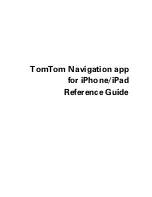
Chapter 29: Internet Protocol Version 4 Packet Routing
332
Section VII: Routing
Routing Information Protocol (RIP)
A switch can automatically learn routes to remote destinations by sharing
the contents of its routing table with its neighboring routers in the network
with the Routing Information Protocol (RIP) versions 1 and 2.
RIP is a fairly simple distance vector routing protocol that defines networks
based in how many hops they are from the switch, just as with static
routes. A network that is more than fifteen hops away (one hop is one link)
is considered as unreachable and is not included in the routing table.
RIP version 2 permits the addition of subnet masks and next hop
information in RIP updates. This allows the use of different sized subnet
masks on different subnets within the same network.
RIP broadcasts are automatically activated when the protocol is added to
a routing interface on the switch. An interface sends RIP packets to the
RIP multicast address 224.0.0.9 when sending version 2 packets or uses
the broadcast address when sending out version 1 packets.
A route is propagated by RIP if its status at the physical level is active. An
active route has at least active one port in the VLAN. RIP does not
propagate an inactive route where there are no active ports in the VLAN.
RIP can be added to a maximum of 100 interfaces on a switch and the
route table can store up to 1024 dynamic routes.
Since the interfaces on a switch can route packets among the local
subnets without the presence of RIP or static routes, the routing protocol is
only necessary if the switch is to learn remote destinations by sharing the
switch’s routing table with the neighboring routers, and you choose not to
specify the routes manually with static routes.
You add RIP to the routing interfaces where there are neighboring routers
to remote destinations. You do not need to add RIP to interfaces where
there are no neighboring routers.
A route learned by RIP is immediately added to the routing table, where it
becomes available to all the interfaces on the switch.
When you add RIP to an interface, you can specify the type of RIP packets
the routing protocol is to send and receive. The AT-9400 Switch can send
either version 1 or 2 packets and accept either or both versions.
Version 2 supports the addition of a password of up to sixteen
alphanumeric characters to protect routers and their tables from
incorporating bogus routing updates. The switch adds the password into
the routing table when it broadcasts the contents of the table to its
neighboring routing devices, which check the password prior to updating
their tables.
Содержание AT-S63
Страница 14: ...Figures 14 ...
Страница 18: ...Tables 18 ...
Страница 28: ...28 Section I Basic Operations ...
Страница 58: ...Chapter 1 Overview 58 ...
Страница 76: ...Chapter 2 AT 9400Ts Stacks 76 Section I Basic Operations ...
Страница 96: ...Chapter 5 MAC Address Table 96 Section I Basic Operations ...
Страница 114: ...Chapter 8 Port Mirror 114 Section I Basic Operations ...
Страница 116: ...116 Section II Advanced Operations ...
Страница 146: ...Chapter 12 Access Control Lists 146 Section II Advanced Operations ...
Страница 176: ...Chapter 14 Quality of Service 176 Section II Advanced Operations ...
Страница 196: ...196 Section III Snooping Protocols ...
Страница 204: ...Chapter 18 Multicast Listener Discovery Snooping 204 Section III Snooping Protocols ...
Страница 216: ...Chapter 20 Ethernet Protection Switching Ring Snooping 216 Section III Snooping Protocols ...
Страница 218: ...218 Section IV SNMPv3 ...
Страница 234: ...234 Section V Spanning Tree Protocols ...
Страница 268: ...268 Section VI Virtual LANs ...
Страница 306: ...Chapter 27 Protected Ports VLANs 306 Section VI Virtual LANs ...
Страница 320: ...320 Section VII Internet Protocol Routing ...
Страница 360: ...Chapter 30 BOOTP Relay Agent 360 Section VII Routing ...
Страница 370: ...Chapter 31 Virtual Router Redundancy Protocol 370 Section VII Routing ...
Страница 372: ...372 Section VIII Port Security ...
Страница 402: ...Chapter 33 802 1x Port based Network Access Control 402 Section VIII Port Security ...
Страница 404: ...404 Section IX Management Security ...
Страница 436: ...Chapter 36 PKI Certificates and SSL 436 Section IX Management Security ...
Страница 454: ...Chapter 38 TACACS and RADIUS Protocols 454 Section IX Management Security ...
Страница 462: ...Chapter 39 Management Access Control List 462 Section IX Management Security ...
Страница 504: ...Appendix B SNMPv3 Configuration Examples 504 Security Model Security Level Storage Type SNMPv3 Parameters Continued ...
Страница 532: ...Appendix D MIB Objects 532 ...
















































